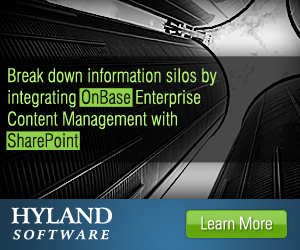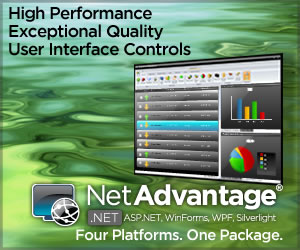Aleri Places High Priorities on Delivering Event-Processing Technology for High-Performance Computing
- Friday, June 1, 2007, 12:00
- Special Features
- Add a comment
 With offices in the US and the UK, Aleri (www.aleri.com) specializes in high performance event-processing technology that is being used to power mission-critical applications within a number of the world’s leading financial institutions. According to Don DeLoach, CEO at Aleri, their Streaming Platform is “the leading enterprise class event-processing technology” in terms of performance and versatility. Designed from the ground up for high throughput with minimal latency, it provides an industrial-strength engine that can address a wide variety of event-processing needs in financial services.
With offices in the US and the UK, Aleri (www.aleri.com) specializes in high performance event-processing technology that is being used to power mission-critical applications within a number of the world’s leading financial institutions. According to Don DeLoach, CEO at Aleri, their Streaming Platform is “the leading enterprise class event-processing technology” in terms of performance and versatility. Designed from the ground up for high throughput with minimal latency, it provides an industrial-strength engine that can address a wide variety of event-processing needs in financial services.
WFS: Don, how do you define event processing?
DD: The analysis of fast-moving data by applying complex logic to enable a response to the changing data in real time.
Real-time response to changing event data, like market data or transactions, is the key. In some applications, latency can be critical, like trading applications where every millisecond counts. The event processor can absorb, normalize, aggregate and analyze this information continuously as the data arrives and, in Aleri’s case, deliver low-latency results in the face of very high message rates and large data volumes.
WFS: How is it being deployed in the HPC trading environment?
 DD: Across the trade life cycle, from automated strategy trading, algorithmic trade execution, order book analysis, smart-order routing, trade quality monitoring, real-time portfolio risk analysis and aggregation, to all sorts of regulatory and compliance use cases, most notably RegNMS in the US and MiFID in Europe.
DD: Across the trade life cycle, from automated strategy trading, algorithmic trade execution, order book analysis, smart-order routing, trade quality monitoring, real-time portfolio risk analysis and aggregation, to all sorts of regulatory and compliance use cases, most notably RegNMS in the US and MiFID in Europe.
WFS: What’s the advantage of using event processing over traditional technologies?
DD: Scale, performance, and time-to-deploy.
WFS: Why?
DD: Relational databases were not designed to handle the combination of data volumes, flow rates and low-latency processing to adequately meet today’s needs. They either haven’t been used or have resulted in system bottlenecks, forcing people to make decisions based on old data.
For trading apps, people have had to write applications from scratch to achieve real-time performance, an expensive, difficult-to-maintain solution. Against a backdrop of constant change, competition and the increasing demands we’re seeing today, a solution that offers rapid deployment and flexible logic without sacrificing performance is essential.
WFS: What are the drivers behind EP adoption?
DD: The move to electronic trading is a contributor, due to message rates and the need for low-latency response. The emergence of multi-asset, multi-geography trading is also challenging the limits of existing technology and applications, plus there’s an increased focus on risk management in light of the growing credit exposure, which many believe has extended into system-wide risk. This drives the need to understand positions across trading P&Ls and be able to effectively manage risk on a real-time basis, which in turn, increases demand for this type of technology. Finally, there are regulatory requirements driving demand to re-tool the underlying infrastructure to keep pace.
WFS: What should business and tech management consider when preparing RFPs for EP technology?
DD: Great question. The most obvious: performance, features and functionality. But here’s the catch: many projects adopting EP technology start small, with a couple of data sources and some relatively simple logic. In these simplistic tests, most products may appear similar. If your plans call for a very small, isolated use of EP then that’s probably OK as it doesn’t matter which you select. But if you contemplate use with broader reach, or touching more critical applications, begin asking questions like ‘Was the product architected to scale, not only in support of high message rates but to work with very large data sets? Was it designed to support mission-critical and enterprise-class apps? Does it have the versatility to be applied to all the different EP apps contemplated?’ Last question: ‘Is the vendor a provider with experience deploying this technology within enterprise applications?’
WFS: Last question. What sets Aleri apart?
 DD: Our ability to provide event-stream processing technology for enterprise-class computing. We’re designed for commercial-grade applications in demanding environments with features such as optional disk-based persistence of real-time event data for full state recovery after failure, a purpose-built storage manager for high-performance processing involving large data sets, the ability to change data models on the fly, allowing for continuous operation, support for high-availability configurations, and built-in security features.
DD: Our ability to provide event-stream processing technology for enterprise-class computing. We’re designed for commercial-grade applications in demanding environments with features such as optional disk-based persistence of real-time event data for full state recovery after failure, a purpose-built storage manager for high-performance processing involving large data sets, the ability to change data models on the fly, allowing for continuous operation, support for high-availability configurations, and built-in security features.
- Share
-
 Print This Post
Print This Post






